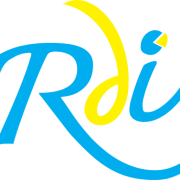Yoga Activity for Enhancing Executive Functions of the Brain for Early Childhood Children
Keywords:
Yoga activities, early childhood children, Executive FunctionsAbstract
Yoga activity for enhancing Executive Functions (EF) of the brain for early childhood children was created to promote physical, emotional, psychological, social, and intellectual development and foster frontal brain exercise. The activities encourage children to use their imagination, concentrate on studying, improve memory, exercise their mind, have self-confidence, relieve stress, and control self-emotions from doing the wrong things. This experiential learning activity consisted of 9 aspects: 1) working memory, 2) inhibitory control, 3) cognitive flexibility, 4) focus, 5) emotional control, 6) self-monitoring, 7) initiating, 8) planning and organizing, and 9) goal-directed persistence. From the activity, children can use their imagination, develop positive disciplines with good physical and mental health, and can live happily with others in society.
Downloads
References
กระทรวงศึกษาธิการ. (2561). คู่มือหลักสูตรการศึกษาปฐมวัย พุทธศักราช 2560. กรุงเทพมหานคร : โรงพิมพ์ชุมนุมสหกรณ์การเกษตรแห่งเทศไทย. ทาญิการ์ ศรีสมภาร. (2562). โยคะเด็ก กิจกรรมเสริมสร้างศักยภาพเด็กปฐมวัย. ค้นเมื่อ 20 สิงหาคม 2563, จาก https://www.youngciety.com/article/learning/yoga-for-kids.html.
นัตโตะซัง และศักดิ์ชัย ศรีวัฒนาปิติกุล. (2554). คุณหนู YOGA. กรุงเทพมหานคร : วงกลม. ปทัตตา ภริตาธรรม. (2553). โยคะทารกและเด็กพร้อมโภชนาการเพื่อการเป็นอัจฉริยะ. นนทบุรี : แพรธรรม.
ปนัดดา ธนเศรษฐกร. (2562). คู่มือพัฒนาทักษะสมอง EF Executive Functions สำหรับครูปฐมวัย. กรุงเทพมหานคร : เอกพิมพ์ไท. สถาบันอาร์แอลจี. (2558). การคิดเชิงบริหารของสมอง. ค้นเมื่อ 19 สิงหาคม 2563, จาก http://www.dailynews.co.th/education/316031.
สุภาวดี หาญเมธี. (2558). ภูมิคุ้มกันชีวิตและป้องกันยาเสพติด คู่มือสำหรับครูอนุบาล. (พิมพ์ครั้งที่ 1). กรุงเทพมหานคร : รักลูกบุ๊คส์.
อีเว้นท์ ป็อป. (2563). 5 ท่าโยคะสำหรับมือใหม่ต้องลอง. ค้นเมื่อ 20 สิงหาคม 2563. จาก https://www.eventpop.me/blogs/523-5-yoga.
Akerufeed. (2559). 8 ท่าโยคะง่ายๆ ขจัดความเครียดออกจากร่างกาย. ค้นเมื่อ 20 สิงหาคม 2563. จาก https://www.akerufeed.com/health/yoga-poses-flush-stress
Barkley, R. (2011). คู่มือพัฒนำทักษะสมอง EF Executive Functions สำหรับครูปฐมวัย. กรุงเทพมหานคร : เอกพิมพ์ไท.
Marieta. (2563). 3 เหตุผลที่โยคะเหมาะสำหรับเด็ก. ค้นเมื่อ 20 สิงหาคม 2563. จาก https://www.doyou.com/why-yoga-for-kids-95584/.
Plook Parenting. (2560). EF (Executive Functions) “ทักษะการคิดเพื่อชีวิตที่สำเร็จ” สำคัญแค่ไหน แล้วจะพัฒนาทักษะ EF ให้ลูกอย่างไรดี. ค้นเมื่อ 18 สิงหาคม 2563, จาก https://www.trueplookpanya.com/knowledge/content/55691/-blo-parpres-par-.
The Wonder Studio. (2562). โยคะสำหรับเด็ก ช่วยพัฒนาด้านร่างกายและจิตใจ. ค้นเมื่อ 20 สิงหาคม 2563, จาก https://thewonderstudio.co/2019/01/02/yoga-for-kids/
Henningsen, K. (2013). The Benefits of Yoga for Children. Retrieved August 21, 2020, from, http://healthandwellness.kaplan.edu/articles/yoga/The%20Benefits%20of%20Yoga%20for%20Children.html.
Ingunn Haggen & Usha S. Nayar. (2014), Kimberly Raymond. Enhancing Preschoolers’ Self-Regulation Via Mindful Yoga. 14(5), pp. 3-4
Rachel A .Razza & Dessa Bergen-Cico. (2015). Enhancing Preschoolers’ Self-Regulation Via Mindful Yoga. 13 (24). pp. 372–385
Schonert, R. & Stewart L. (2010). The Effects of a Mindfulness-Based Education Programon Pre- and Early Adolescents’ Well-Being and Social and Emotional Competence, 7(1), pp. 137–151.
Sat Bir Khalsa. (2013). Hill, Skill, and Will: Executive Function from MultipleIntelligences Perspective, Executive Function in Education : From Theoryto Practice, edited by Lynn Meltzer, The Guilford Press, N.Y. pp. 19.
Downloads
Published
How to Cite
Issue
Section
License
Copyright (c) 2021 Dhonburi Rajabhat University

This work is licensed under a Creative Commons Attribution-NonCommercial-NoDerivatives 4.0 International License.
บทความที่ได้รับการตีพิมพ์เป็นลิขสิทธิ์ของ มหาวิทยาลัยราชภัฏธนบุรี
ข้อความที่ปรากฏในบทความแต่ละเรื่องในวารสารวิชาการเล่มนี้เป็นความคิดเห็นส่วนตัวของผู้เขียนแต่ละท่านไม่เกี่ยวข้องกับมหาวิทยาลัยราชภัฏธนบุรีและบุคลากรท่านอื่นๆในมหาวิทยาลัยฯ แต่อย่างใด ความรับผิดชอบองค์ประกอบทั้งหมดของบทความแต่ละเรื่องเป็นของผู้เขียนแต่ละท่าน หากมีความผิดพลาดใดๆ ผู้เขียนแต่ละท่านจะรับผิดชอบบทความของตนเองแต่ผู้เดียว






